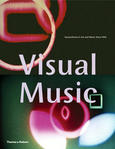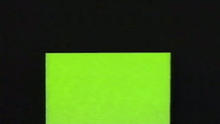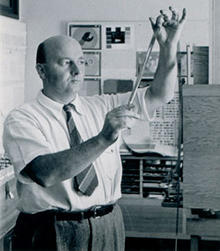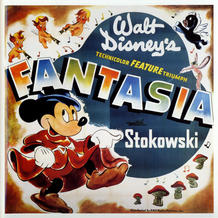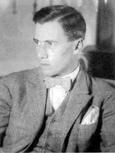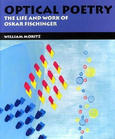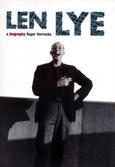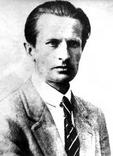Jules Engel
(1909-2003) was a Jewish-Hungarian American filmmaker, painter, sculptor, graphic artist, set designer, and director of live action and animated films, and teacher.
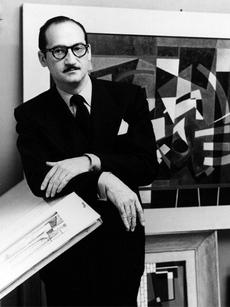
"My aim is to discover and not to solve problems. It is to find things that you didn't know existed!
My concern is not so much with texture as with shapes of all kinds in their multiplicity, their relationships and their capacity for metamorphosis - the way forms are related and made dynamic through motion.
The emphasis, then, is on the development of a visual dynamic language, independent of literature and theatrical traditions, demonstrating that pure graphic choreography is capable of its own wordless truth.
The approach to my films is intuitive and structured - I am always aware that the film I am doing is a search for graphic art, not by mathematical formulas but by visual trial and error. It is a process of discovery."
(Jules Engel "REFLECTIONS: Graphic Choreography")
Source: Center for Visual Music
Jules Engel is most remembered as the founding director of the Experimental Animation Program at the California Institute of the Arts, where he taught until his death, serving as mentor to several generations of animators.
Engel was born in Budapest, Hungary and immigrated to Chicago at the age of thirteen, where he grew up in Oak Park, Illinois and attended Evanston Township High School. In 1937, Engel traveled to Los Angeles originally to gain athletic scholarship to either USC, or UCLA, as he was in the track team while in high school . He would eventually settle in Hollywood, while at the same time studying at the Chouinard Art Institute in downtown Los Angeles. It was during his studies at Chouinard, he met many artists who would go on to work for Disney Studios, and later recommend him to Walt Disney Studios. in the meantime, he work under Charles Mintz Studios as an inbetweener.
A year later, he was asked by Walt Disney Studios to work on the now Disney classic film Fantasia. At the time, Disney Studios was doing something innovative, integrating "low" (animation) and "high" (classical music) art, and the studio needed someone who was familiar with the timing of dance. It was because of his drawing talent and his growing knowledge of dance, Engel was assigned to storyboard the Russian spites and Chinese mushrooms dance sequences of Tchaikovsky’s Nutcracker Suite.
For the Russian sprite sequence, Engel inventively placed the dancing sprites against the stark black ground. And by bolding the simplified setting, he intensified the contrast of the figure and the ground. The latter sequence, Chinese Mushrooms, has brought much debate in the animation community surrounding Engel himself, Art Babbit, and Elmer Pummer over who got to claim responsibility for the sequence. Engel could claim responsibility for the choreography (timing) for the final sequence, but to this day, animation scholars and former students alike continue to debate about it from all sides.
The director of Bambi, David Hand, asked Engel to do color work for his film. He worked on the timing for the sequence where Bambi first encounters his childhood playmate, Faline, which required a lot of movement analysis. After completing the sequence, he became committed to the entirety of the project after hearing the score for the film, which he thought had lot of abstraction and movement. He began doing color sketches because he felt that the color schemes they were using during production was too naturalistic. Engel's time at Disney would come to an end with the development of the Disney animators' strike. While the union won the case over the studio, Engel didn't go back, largely because while he enjoyed the place, he felt uncomfortable being surrounded by colleagues that he felt didn't share his passion for the aesthetics of animation.
During World War II, he was in the service alongside the likes of actor Ronald Reagan, and famed children's book writer Theodor Geisel (Dr. Seuss) in the First Motion Picture Unit as an animator. Originally, Engel was waiting to be drafted in the U.S. Army, but was rejected because of his poor eyesight (indicated by his glasses), and a bad shoulder. He was adamant in joining the war cause because he did not will to deal with the embarrassment of facing up to his friends who were already drafted. The Air Force would eventually recruit Engel in the Motion Picture Unit to work on training videos and war bond advertisements. he would eventual work on drawing instructions for the newer models of the weapons being produced, and maps based from looking above from an airplane, where he infused his earlier practice of abstraction.
Engel was one of a group of animators (himself, William Hurtz, John Hubley, and Herbert Klynn) who later left Disney to found the United Productions of America studio. At UPA, Engel worked as a background artist on cartoons like Gerald McBoing Boing, Madeline, and Mr. Magoo. The environment at UPA was much more open-minded to change, unlike his former employer, Disney. It was during this period where Engel was not only inspired from paintings by Wassily Kandinsky, Paul Klee, but also Miró, Matisse, and Dufy, as well as the Bauhaus book Language of Vision. Engel would later claim responsibility for discovering the children's book Madeline, and suggesting to Stephen Bosustow to buy and copyrights and develop the series.
In 1945, Hazel Guggenheim (of the art patronage family) arranged for Engel to have first exhibition of painting at the Frederick Kahn Gallery in Los Angeles. As the story goes, Engel and Guggenheim were visiting the gallery when Ms. Guggenheim suggested Mr. Kahn that he should give Jules an exhibition. Taken by surprise, Engel agreed to have an exhibition if Kahn would agree not to sell anything.
With former UPA colleagues Herbert Klynn and Buddy Getzler, he then launched Format Films, and produced several popular US television series, including The Alvin Show (1961-62) and The Lone Ranger (1966-67), as well as one-off animated shorts, among them the Ray Bradbury-scripted, and Oscar-nominated, Icarus Montgolfier Wright (1962).
In 1962, Engel left for Paris where he directed a French animated cartoon, The World of Sine, which received the French La Belle Qualite Award. The World of Sine was purchased and released throughout Europe by Jacques Tati. Coaraze, made in French town in 1965 won the Prix Jean Vigo Award for Engel.
In 1964, in Paris, Engel co-directed The Little Prince, with Raymond Gerome. This was a theatre production combined with animation and live performance on stage. He was set designer for Le Jouex, and avant garde play starring Michelle Boucett.
While he was in Paris and after he had come to the attention of renowned cartoonist Siné, a fan of the UPA work, Engel directed an experimental live-action film, Coaraze, which won the Prix Jean Vigo. During his stay in Paris, he was friendly with other artists at the time, including Man Ray. In the late 1960s he began making his own personal fine art animation. He also made several documentaries on other artists.
Returning to the U.S., Engel continued his films on artists, directing a film for Tamarind Lithography Workshop called A look at a Lithographer and American Sculpture of the Sixties and also a film, Max Bill, about the Swiss artist.
In 1970, Engel founded CalArts' Program in Experimental Animation, widely recognized as one of the world's foremost centers for animation arts. In 2001, CalArts hailed his indelible contribution to the arts by conferring on him the title of Institute Fellow, the highest honor it awards to faculty. The Fellowship has only be given to two other faculty to date, Alexander Mackendrick, and Mel Powell.
In one of his final major acts, in May 2003, Engel established the Jules Engel Scholarship Fund. The recipients of the awards are those students who have carried out their work at CalArts in Jules’ name have all demonstrated rigor, daring imagination and great curiosity about the world, leading into inventive interdisciplinary projects.
Engel was also a painter, and produced a prolific body of oil paintings, lithographs and other graphic artworks. His paintings are in the collections of major museums, and recently there have been exhibits of his work at Tobey C. Moss Gallery in Los Angeles. He was still working on a new series of lithographs just before his death.
Source: Wikipedia

